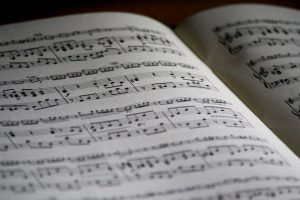
I want you to read the next line out loud:
A, B, C, D, E, F, G, H, I, J, K, L, M, N, O, P, Q, R, S, T, U, V, W, X, Y, Z.
Now, be honest with me. Did you say those alphabet letters in a monotone voice with an even pace? Or was it more singsong like this: A-B-C-D-E-F-G (breath), H-I-J-K-L-M-N-O-P (breath), Q-R-S (breath), T-U-V (breath), W-X (breath), Y and Z. Then your mind perhaps added “Now I know my A, B, Cs” before you could stop it? You probably learned the alphabet song before you really remember, usually about 18 months old. It is truly amazing that a young brain can learn to precisely recite a 21-second phonetic sequence easily!
The Body of Proof
Fun songs work. You can’t learn if you can’t remember, and music has been long used to improve memory. Marketing agencies rely on this physiological fact. A commercial jingle gets embedded in our memory so that in less than four seconds you think of a product associated with the sounds.
For a parent, this is a valuable tool, so let’s examine how it works.
The Science of the Matter
We know that the brain doubles in size in the first year, and by age three, it has reached 80 percent of its adult volume. But all those brain cells aren’t good for much if they don’t connect. Connections in the brain are called “synapses.” While the basic growth is relatively standard in all children, the development of synapses is more a function of environmental stimuli. A child’s senses report to the brain about her environment and experiences, and this input stimulates neural activity to create synapses—connections. We use these connections throughout our lives to understand and interact with our world. Language is our basic interaction. The trick to teaching a child is to get many senses involved in the task.
Putting it to Use
Did you know we have seven senses? Sight, smell, taste, touch, and hearing are all well-known. Not so commonly known are “vestibular” (movement) and “proprioception” (body awareness). When it comes to learning, the more senses involved in the neural activity, the more easily information is retained and available for recall. Basic phonics and more complex language skills like rhymes can be presented by fun songs that involve movement and body awareness, such as clapping. This will create strong synapses, a virtual highway for learning.
Chris Brewer, founder of LifeSounds Educational Services and author of the new book Soundtracks for Learning, says sounds can help to hold our attention, evoke emotions, and stimulate visual images. All of these are important for learning. For kids, fun sounds and motions will make your time together more memorable. Through song, rhyme, play, and dance, you will enjoy teaching your child valuable language skills. Start with some of the videos below!